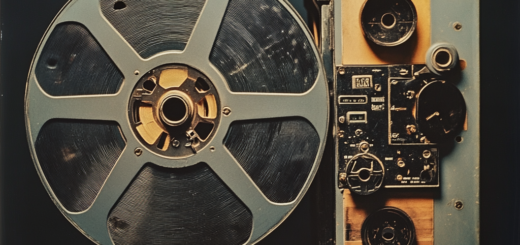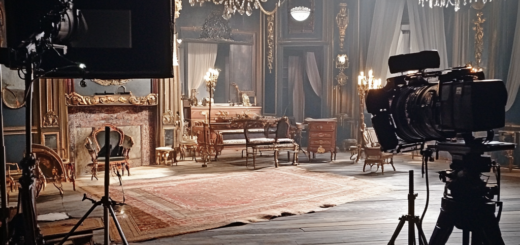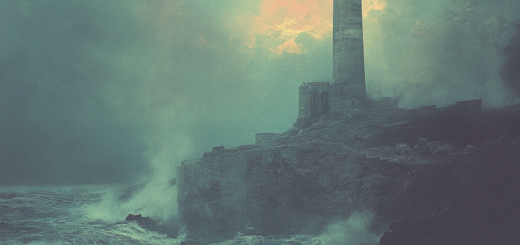From film to art object: how cinema turns into an exhibition
Cinema as art: traditional approaches to film perception
Cinema has always been perceived as a powerful means of art, but for a long time it was strictly limited to the screen. The film was an object for observation, which existed within certain temporal and spatial boundaries. The emergence of cinema as an art at the end of the 19th century ushered in a new era in visual perception. For decades, cinema has remained predictable in its presentation: It was a place where the audience sat in a dark hall and enjoyed what was happening on the screen. The structure of the film, the plot, the editing, the acting — all this formed the main content of the art.
However, as cinema developed, there was a transformation in the perception of cinema itself. Cinematographers began to look for new forms of expression, exploring the possibilities of various visual and audiovisual effects, increasingly integrating cinema into other forms of art such as painting, theater and music. In the 1960s and 70s, the first steps were taken to break down traditional cinematic barriers, which became the basis for further expanding the boundaries of film perception.
How films become exhibits: the beginning of a new era in cinematography
The transformation of film from just an entertainment medium into an object for cultural exhibitions began with the appearance of the first art galleries and museum exhibitions dedicated to cinema. One of the important stages was the realization that films can be part of the art space, and not just a temporarily broadcast product in the cinema. The first wave of art exhibitions featuring films occurred in the 60s and 70s, when artists began experimenting with cinema, turning it into part of installations. This process began mainly in the context of video art and experimental cinema.
The transformation of the film into an art object became possible due to many factors: the development of technology, new artistic trends, as well as the perception of cinema itself as an independent art form. Cinema exhibitions began using not only the film itself, but also various elements such as sets, costumes, projectors, as well as documentary materials related to the creation of the film. These exhibitions no longer just showed films, but also told the audience about the process of their creation, about the philosophical and cultural aspects that were behind each frame.
Cinema exhibitions: when the film goes beyond the screen
One of the most striking trends in cinema has become the concept of exhibitions, where the film itself has ceased to be just an audiovisual object, but has become part of an entire installation. Here, the film doesn’t just look, it feels. All the elements of the piece become important: sound, light, color, space. In such exhibitions, cinema becomes an integral part of art in general.
Instead of just broadcasting a film, exhibitions create a special space in which the viewer is not a passive observer, but becomes a part of what is happening. Interactivity and participation are becoming important elements of such exhibitions. Cinema, as an art object, can be perceived not only through the screen, but also through interaction with the installation, through the space that creates the effect of presence.
Installations and video art: the evolution of films in art spaces
Video art, as an art direction, has become an important stage in the evolution of the perception of film as an art object. Here, the film ceases to be just a linear narrative, and its visual and audiovisual elements become self-sufficient. Video cameras, projectors, screens, eccentric montages and experimental techniques become the basis for the creation of new art forms, where film loses its traditional status.
The process of turning a film into an art object begins with the fact that cinema moves from cinemas to galleries and museums, and then ceases to be just a means of entertainment. Video projections, films shot on film and digital, as well as installation works — all this is beginning to become part of the artistic process. Video art has a special feature — it does not lend itself to strict rules of narration. In it, space, time and sound become flexible, and instead of an unambiguous meaning, the viewer gets the opportunity to immerse himself in the flow of emotions and impressions.
Cinema and new technologies: how digitalization and immersive formats are changing the perception of film
With the development of technology, cinema continues to transform, expanding its boundaries. One of the striking examples is the use of new digital formats such as virtual and augmented reality (VR and AR), as well as immersive technologies. In these new formats, the film goes beyond the traditional cinema, becoming part of the surrounding space.
Digitalization makes it possible to create multimedia objects in which viewers can interact with the outside world. Immersive screenings, where the viewer becomes a part of what is happening, rather than just an observer, are becoming increasingly popular. Films made using VR or AR technology allow viewers to immerse themselves in virtual worlds and even influence the course of events. The viewer becomes not just a witness to the events, but also an active participant.
The future of cinema: the boundaries between film and art object are blurred
The future of cinema is likely to be associated with the further blurring of boundaries between cinema and other forms of art. New technologies and perception formats will make cinema not just a means of storytelling, but a full-fledged part of expositional art.
The main changes in the future of cinema:
- Integration with virtual and augmented reality — films will cease to be linear and will turn into live interactive spaces.
- Using artificial intelligence, personalized stories will adapt to the viewer in real time.
- Cinema as an art object — films will become part of museum and gallery exhibitions, and viewers will be able to perceive them from different angles and through various sensory systems.
- The viewer’s interaction with cinema — cinema will become not only a visual, but also tactile, sound, and possibly a completely immersive experience.
- The future of cinema is not just about new screens and formats, but about the full integration of art and technology. The viewer will no longer be just an observer, he will become an active participant, interacting with the film as with a living object, which will change the very concept of cinema.
Questions and answers
Films began to be included in exhibitions as part of installations, where the viewer interacts not only with the film, but also with the space that creates the effect of presence.
Video art is a direction where the film becomes a self—contained work that goes beyond the linear narrative. It uses various technologies to create new visual and audiovisual forms.
With the help of technologies such as virtual and augmented reality, films become not just for observation, but for active interaction with the viewer, who can become a part of what is happening.
An example of such exhibitions are installations where films become part of multimedia objects that viewers can explore rather than just watch.
The future of cinema will be connected with the integration of new technologies such as VR and AR, which will allow viewers to become active participants in the film, not just observers.



